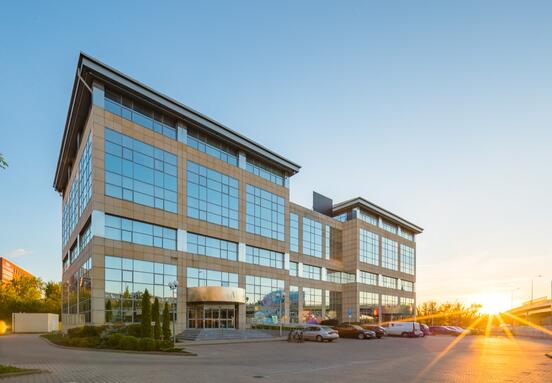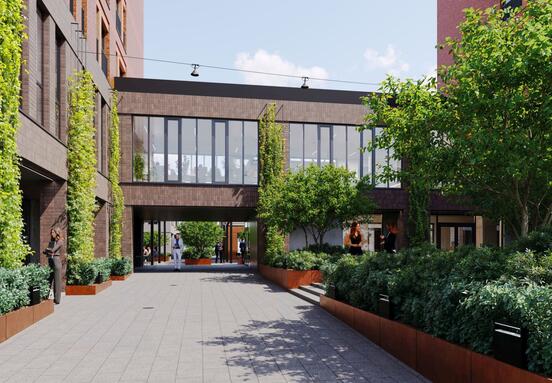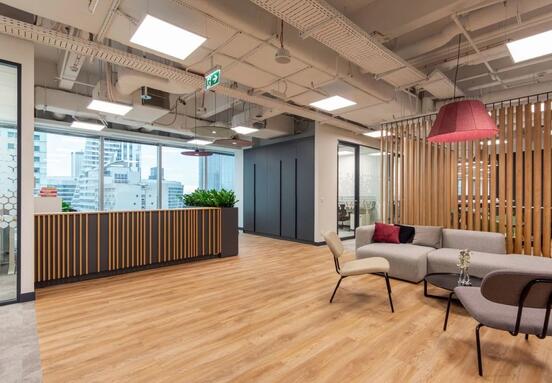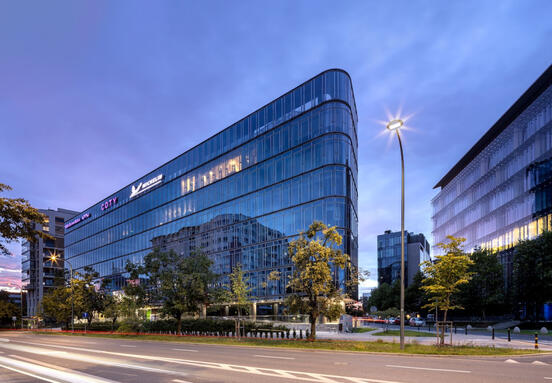The most common form of hybrid work indicated by the respondents was the one assuming full flexibility and the ability to make decisions by the employee about when to work from the office and when from home - this form was chosen by 30%. employers, by 3 pp. more than a year ago. The traditional model of work as the target was indicated by nearly 27 percent. surveyed employers, of which 75 percent allows remote work in exceptional situations. The only remote mode of work was not indicated by any of the respondents. 14 percent of the respondents have not yet made a decision in this regard, which is a decrease by 16 pp. compared to the June 2021 survey.
Over 10 percent of respondents introduced changes in the functioning of office space during the pandemic, and almost every fourth (24%) plans to introduce them in the next 12 months. Nearly 25 percent of the respondents have not yet made a decision in this regard, which is a decrease by 6 pp. compared to the survey from last June. 32 percent in turn, it declared that it would not introduce any changes.
No decision to make any changes to the office space may result from the stage of the contract, as well as the lack of capital expenditure usually provided by owners for finishing or modernizing the space. Another limitation for tenants' investment plans may be the increase in the cost of finishing the space, observed since the beginning of 2022, comments Jan Szulborski, senior consultant in the advisory and market research department at Cushman & Wakefield.
A common tool used by 43 percent. of respondents in the field of planning work in the office turned out to be the applications used to support the booking process of desks, rooms and parking spaces. The study shows that employers have increased the number of small meeting and videoconference rooms or booths - these amenities have been introduced by over 40 percent. respondents. Among the elements of office equipment desired by tenants there were also a restaurant or a canteen, an ATM and infrastructure for cyclists, which were indicated by 67, 43 and 40 percent, respectively. surveyed employers.
The study also shows that, in the opinion of employers, the attitude of employees to returning to the office is worse than a year ago. Last year, nearly half of the respondents indicated that the attitude of employees to returning to the office was positive. If we sum up the "positive" and "rather positive" responses for the survey conducted in 2022, the share of employers whose attitude to return to the office was positive decreased by 11 pp.
The survey shows that as many as every fourth surveyed employer introduced solutions aimed at improving the well-being of their employees. 59 percent of respondents increased the amount of greenery in the office, 28 percent. took care of equipping the office with a massage chair, and 23 percent. provided the services of a massage therapist or replacement of furniture with more ergonomic ones. Almost every fourth respondent improved the acoustics, and 18 percent - air quality in the office.
The study was performed using the CAWI method in June 2022, on a sample of 103 decision-makers in the field of office space management (CEO, administrative director, operational director, office manager).








